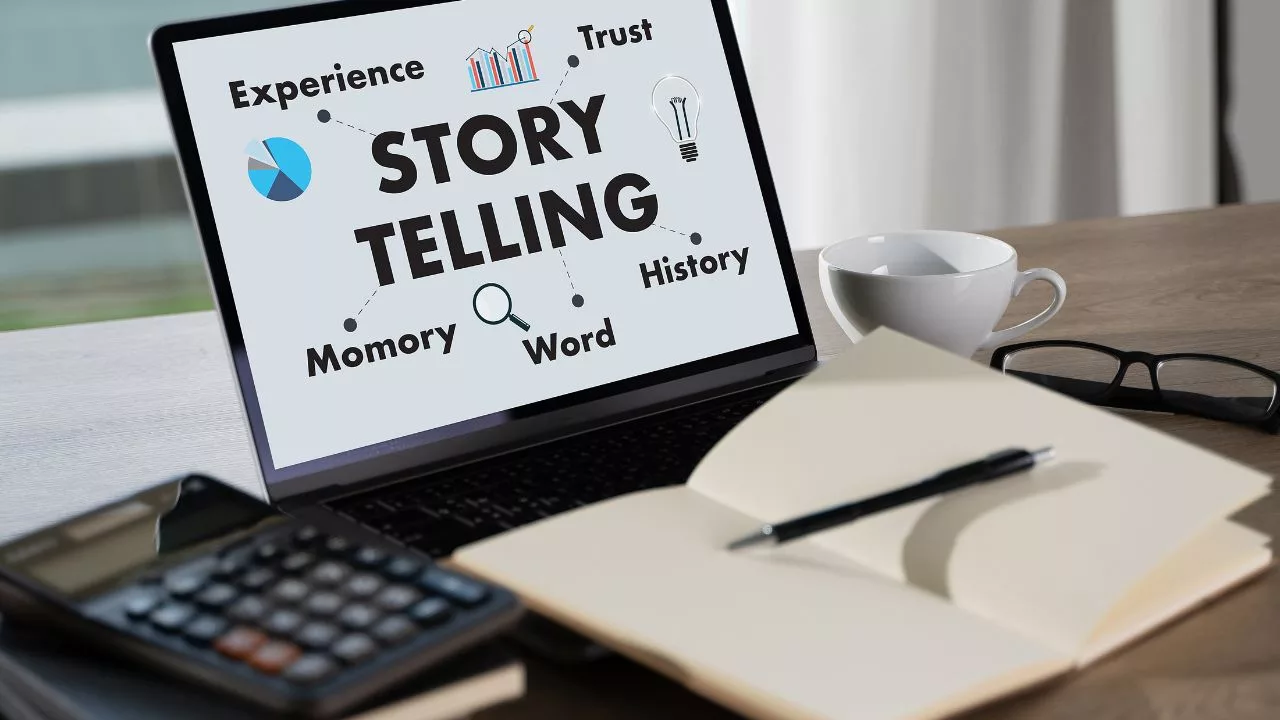
If you ask the question “What is a brand?”, you’ll get a lot of different answers which may not even coalesce around the same point. Most of us would agree that branding is a business concept that is about creating and promoting an identity for your products and services, and that a brand is that identity. But how you create and flesh out that brand is another matter, and people have different ideas on how to achieve it.
One thing that most of us can agree upon is that to be successful and effective, a brand should say something about you: either You as a person, or You as a business. If branding has any purpose at all, it is to give customers an option for a business they can identify with. This is easier in some industries than in others, but if you know your niche it should always be possible to find something that customers can appreciate where branding is concerned.
A key way to structure a brand is to find a coherent branding story. The way you tell your story is of vital importance to creating your brand. And ideally, the more down-to-earth that story is, the better it will be in terms of reaching out to potential new customers and building your base. Although businesses exist to assist with your branding, it’s ironic: the less managed and more organic your brand seems, the more it will resonate with the people you want to reach. The truer the story, the less you will need to manage it.
Start with the why
If someone asked you “Why does your brand exist?” it would be hard not to take that as an insult, but it is a question you have to answer to establish your brand. Why did you start the business? In the main, there is always going to be an origin story. You launched your cleaning company because you were in an office and the smell of cleaning chemicals in the environment was strong enough to make you feel unwell – so you realised there was a need for a more natural alternative to the norm. Or you’d moved to a new city and found there were so many things you suddenly didn’t know how to do there, so you launched a concierge company.
When you tell the story of how your business came into being, you’re recalling the emotions you felt when the idea came into your head. Those are the emotions you want to evoke in a potential customer. They will form a major part of your brand and its identity. Storytellers keep in mind a number of key themes that should be repeated throughout a story to keep people interested. Equally, when telling your brand story, you should be thinking of three or four key words that should inform the branding: If you can come up with a list of words like “Friendly – original – experienced – reliable”, you can work the brand story around those.
Now think about the how

When you know the story you want to tell, it is then important to figure out how you’ll tell it to the people who most need to hear it. If you’re launching a line of craft beers, your message could be about how different the drinks you created are. You were tired of going for drinks with friends and being given the same tastes time after time. Now, try and picture that experience in its simplest form. You could, for example, go with a picture where the colour is drained from the world every time you taste a mass-produced beer. But the moment you try this new craft beer, all the colour returns. From there it’s easy to design a logo, a marketing campaign, a website that reinforces this story.
The story can then be reinforced at every step of the branding journey. For example, if you’re a company focused on sustainability, you could get your brand out there using promotional products such as reusable water bottles or microfibre cloths with your logo on them. Every time someone thinks about doing the right thing for the planet, your brand will come to mind. When you think of a brand as a way of telling a story, you’ll find it much easier to think of ways that merchandising and every other element of marketing intertwines with your concept.
Now you should have an idea of What
It may seem strange that the idea of what your brand is could be third on a list of questions to answer, but bear in mind that companies rebrand multiple times during the initial process, and some of the world’s biggest brands have changed major details even after they launched, including long after they have become established. So there is really no harm in answering a bunch of questions before you even begin to identify your brand: that is, coming up with a name, a logo, an advertising tagline and more. Looking back at the How and the Why, think of how you would portray them in terms of colour and shape.
If your brand values are cool and clinical, then clean lines and colours such as blue and silver are going to evoke those feelings in potential customers. If you’re looking to give a sense of heritage and homestead, then natural autumnal colours like brown and gold will establish that more clearly, while serifed fonts will reinforce that sense. If you want to create the idea of fun, then brighter colours and more impactful fonts will help, while a more free-hand logo will work wonders. In each of these cases, the advertising tagline will suggest itself; make it no longer than seven words long and address it direct to the customer.

Branding has become associated with artifice in many people’s minds because so many people think of a brand and then seek to live up to it. But if you think of your story first and then design the brand to fit around it (and you), you’ll come up with a brand that you can always be authentic about, and one which will allow you to build a customer base that “gets” you from day one. Tell your story the way you want to, and you’ll ensure a happy ending.







